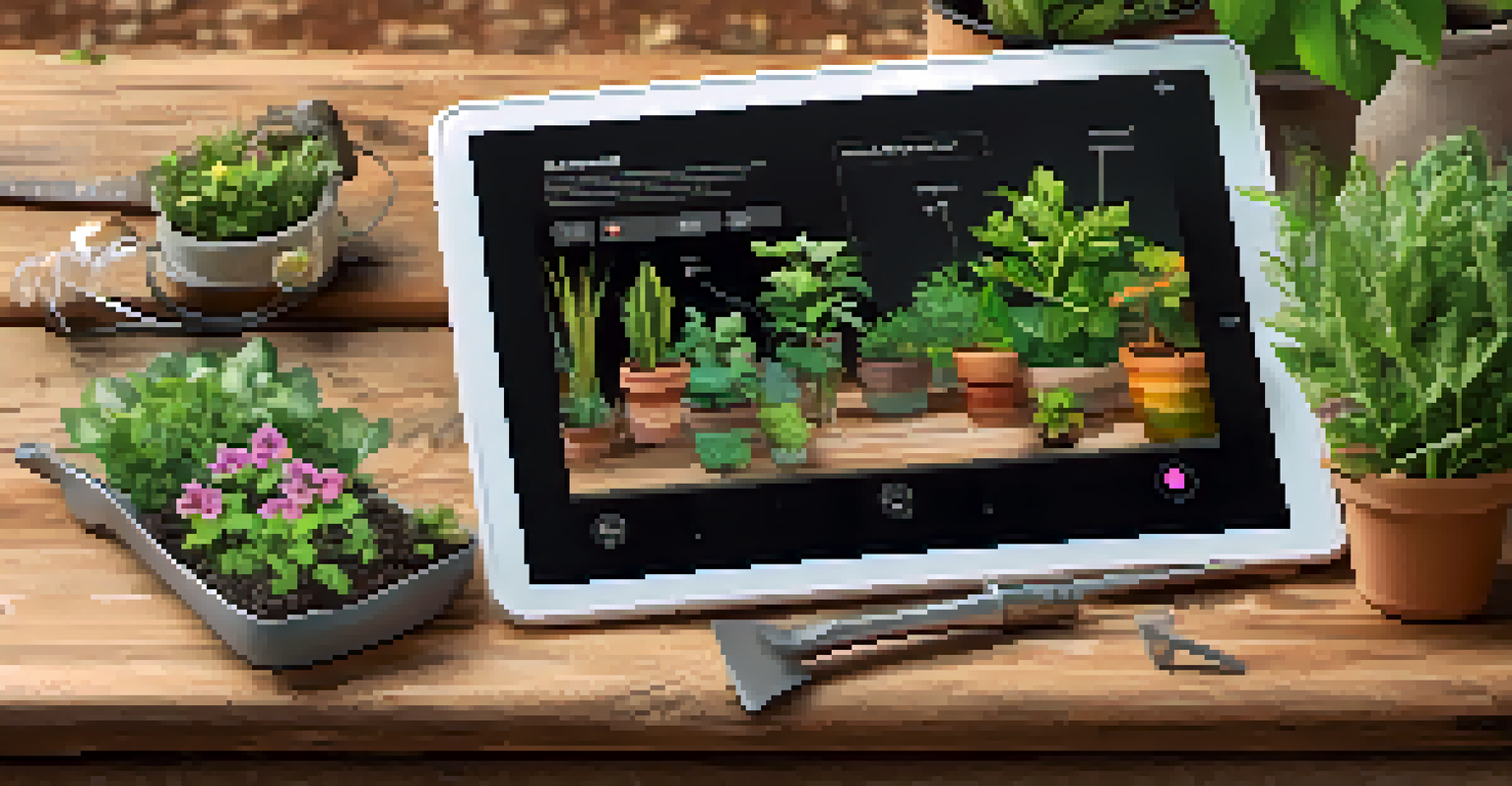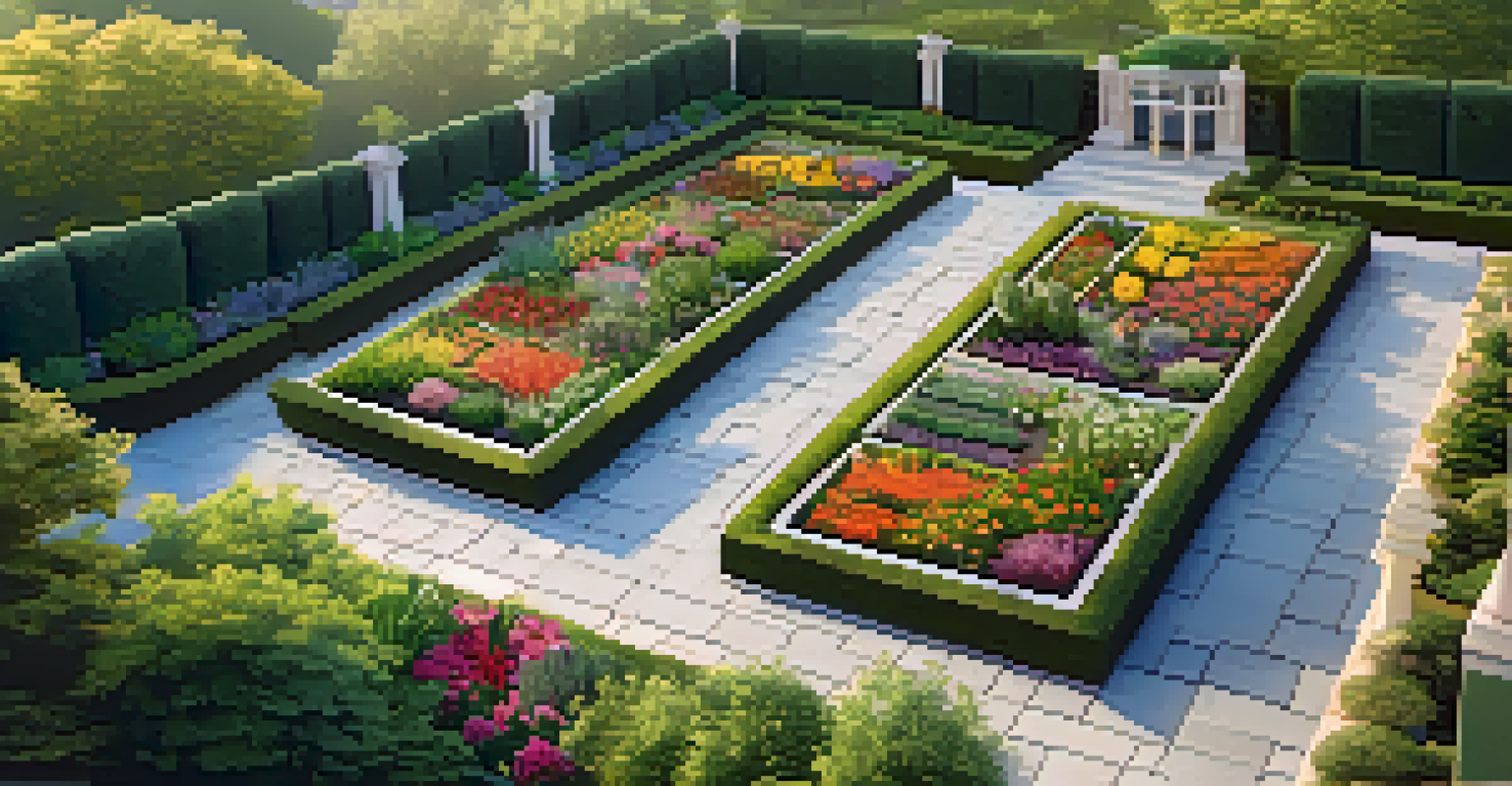How to Choose the Right Plants with Virtual Gardening Tools

Understanding Virtual Gardening Tools and Their Benefits
Virtual gardening tools are digital applications designed to help you plan and manage your garden. They can be websites or mobile apps that simulate gardening experiences, making plant selection easier and more enjoyable. These tools provide a visual representation of what your garden might look like, allowing you to experiment without any physical commitment.
Gardening is a way of showing that you believe in tomorrow.
One of the key benefits of using virtual gardening tools is their ability to save time. Instead of wandering through a nursery or flipping through gardening books, you can quickly access a variety of plants and their requirements at your fingertips. Additionally, many tools offer personalized recommendations based on your location, climate, and soil type, ensuring that you choose plants that thrive in your specific conditions.
Moreover, these tools often include features for tracking plant growth and care schedules. This means you can stay organized and proactive about plant maintenance. Whether you're a seasoned gardener or just starting out, virtual gardening tools can enhance your gardening experience and lead to more successful outcomes.
Assessing Your Garden Space Before Choosing Plants
Before diving into plant selection, take a moment to assess your available garden space. Consider factors like sunlight exposure, soil type, and existing vegetation, as these elements will significantly influence which plants will thrive. For instance, some plants require full sun, while others prefer shade, so knowing your garden's conditions is crucial.

Additionally, think about the size of your space. If you have a small balcony, choosing dwarf or compact varieties can help maximize your limited area. On the other hand, if you have a larger yard, you might opt for a mix of trees, shrubs, and flowers to create a diverse landscape. Virtual gardening tools often allow you to input these specifics, giving you tailored plant suggestions.
Virtual Tools Simplify Gardening
Digital gardening tools offer an easy way to plan, select, and manage plants tailored to your specific garden conditions.
Lastly, consider your gardening goals. Are you looking for aesthetic appeal, attracting pollinators, or perhaps growing edible plants? By clarifying your objectives, you can make more informed decisions when selecting plants, ensuring that your garden aligns with your vision.
Exploring Plant Options with Virtual Gardening Tools
Once you have a clear understanding of your space and goals, it's time to explore plant options. Virtual gardening tools often come equipped with extensive databases of plants, complete with images, care instructions, and growth habits. This feature allows you to compare different species side by side, making it easier to find the perfect fit for your garden.
The love of gardening is a seed once sown that never dies.
Many tools also provide user reviews and ratings, giving insight into the experiences of fellow gardeners. For example, you might discover that a particular flowering plant is prone to pests or that another variety thrives with minimal care. This community feedback can be invaluable in making an informed decision.
Additionally, some tools offer augmented reality (AR) features that let you visualize how plants will look in your garden space. By overlaying digital images of plants onto your actual garden, you can better gauge scale, color, and overall design before making a purchase.
Using Climate and Zone Information for Plant Selection
Understanding your local climate and hardiness zone is essential when selecting plants. Hardiness zones categorize regions based on their average winter temperatures, indicating which plants can survive in those conditions. Virtual gardening tools often include this information, helping you choose plants that are well-suited for your area.
For example, if you live in a warmer zone, you might be able to select plants that require more heat and sunlight. Conversely, cooler zones will limit your options to plants that can withstand frost and lower temperatures. By leveraging this information, you can avoid the disappointment of selecting plants that won't thrive in your environment.
Assess Your Space for Plant Choices
Evaluating sunlight, soil type, and size of your garden space is crucial for choosing the right plants.
Furthermore, many tools also provide insights into seasonal changes, rainfall patterns, and other climate-related factors. This allows you to choose plants that not only survive but flourish throughout the year, ensuring a vibrant garden no matter the season.
Incorporating Aesthetic Elements with Virtual Design Tools
A garden is often a reflection of personal style, and virtual gardening tools can help you incorporate aesthetic elements seamlessly. Many applications allow you to design your garden layout, experimenting with different plant combinations, colors, and textures. This feature empowers you to visualize your ideal garden before committing to any purchases.
For instance, if you're aiming for a cottage-style garden, you might choose a mix of flowering perennials and climbing vines. Alternatively, a modern garden might feature clean lines and minimalist plantings. Using virtual design tools can help you explore different styles, ensuring that your garden aligns with your vision.
Moreover, you can often see how plants will mature over time, allowing you to plan for future growth. This foresight is essential to avoid overcrowding and maintain a balanced aesthetic in your garden design.
Understanding Maintenance Needs with Virtual Tools
When selecting plants, it’s essential to consider their maintenance needs, and virtual gardening tools can assist with this. Each plant comes with specific care instructions, including watering, fertilization, and pruning requirements. By using these tools, you can compare plants not just on beauty but also on the effort they demand.
For example, some plants are drought-resistant and require minimal watering, making them ideal for busy gardeners. Others might need more frequent attention, such as regular deadheading or specific soil amendments. Understanding these needs will help you choose plants that fit your lifestyle and commitment level.
Plan Aesthetics and Maintenance Needs
Incorporating design elements and understanding maintenance requirements helps ensure a beautiful and manageable garden.
Additionally, many virtual tools offer reminders and scheduling features for plant care tasks. This way, you can stay organized and ensure that your garden thrives without feeling overwhelmed by its upkeep.
Finalizing Your Plant Choices and Making Purchases
After exploring options and assessing your needs, it’s time to finalize your plant choices. Virtual gardening tools typically allow you to create a shopping list or wishlist within the app, making it easy to keep track of what you want to purchase. This feature is particularly helpful if you're visiting a local nursery or ordering online.
While making your selections, consider the overall balance and harmony of your garden. Aim for a mix of heights, colors, and textures to create visual interest. Additionally, don't forget to factor in the plants' growth rates; pairing faster-growing species with slower ones can ensure a cohesive look as your garden matures.

Finally, remember to shop from reputable sources, whether local nurseries or online retailers. Many virtual tools offer links to recommended suppliers, making it easier to find healthy plants that will thrive in your garden.